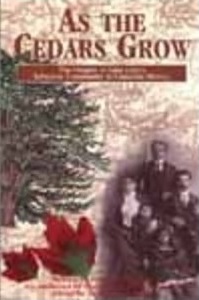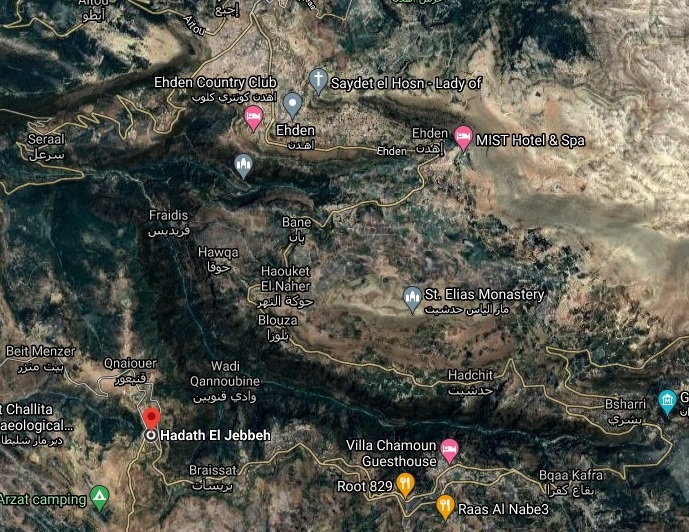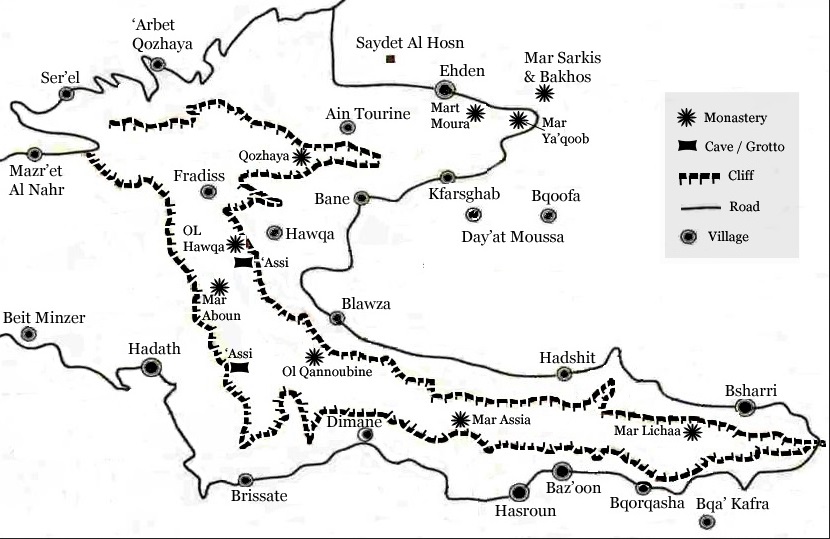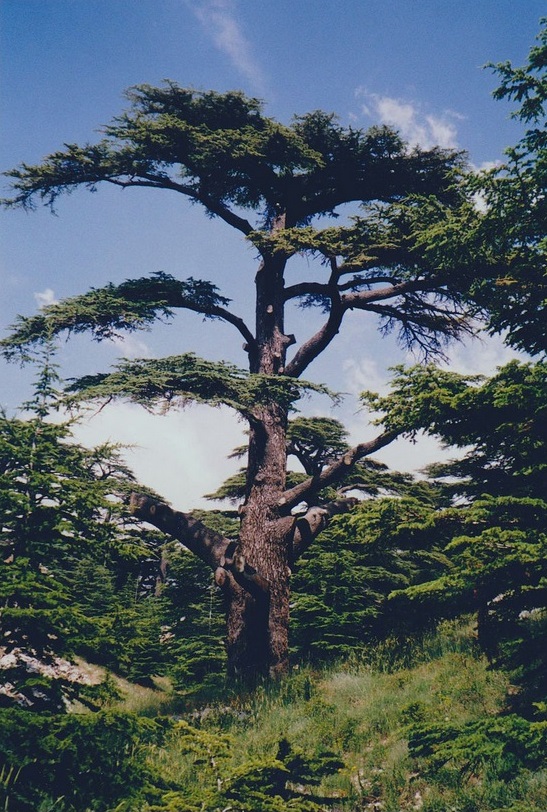 Census for Louis and Amelia Noah Corey Household
Census for Louis and Amelia Noah Corey Household Census for Louis and Amelia Noah Corey Household
Census for Louis and Amelia Noah Corey HouseholdEdward and Kerry O'Brien Biggins Family Tree About the US Census Home Page
|
Between 1879 and the outbreak of the Great war in 1914, a stream of Maronite Christians from the Ottoman province of Syria arrived in St. John, New Brunswick, Canada. One by one, two by two, from a cluster of tiny villages overlooking the Holy Valley of North Lebanon—from the villages of Hadchite, Hadet-el-Jebbe, Biet Menzer, Kniwer and Megdliya, and a dozen more—they came. (As the Cedars Grow, 2002, p. 25)
Louis Corey (Elias Khouri) was born in January 1884 in Lebanon, Syrian Arab Republic.
Amelia Fehem Noah Basil was born August 16, 1879 in Lebanon, Syrian Arab Republic.
Louis and Amelia were married in 1899. They emigrated from Hadet-el-Jebbe, Lebanon, to Eastport, Maine, in January 1899. They lived in Eastport until 1907, when they moved to Saint John, New Brunswick, Canada. Louis was a leader of the local Hadeti (As the Cedars Grow, p. 59).
They had four children in Eastport and two in Saint John:
Louis Corey died January 11, 1952, in Yarmouth, Nova Scotia. Amelia Noah Corey died on January 27, 1955, in Burlington. They and four children are buried at Saint Joseph's Cemetery, Saint John, New Brunswick. See Find A Grave.
 Cover of As the Cedars Grow, 2002. |
CBC News reported that Lebanese people in Saint John are celebrating. They're marking the launch of a new book about the origins of the Lebanese community in the city. As the Cedars Grow tells the story of how they came to Saint John and thrived.
Joe Gabriel's parents came from Lebanon to Saint John as part of a small wave of Lebanese immigration to the city in the late 19th and early 20th century. For people outside the community, their story is largely unknown. Now it's being told. "This to us is a history book. It's Canadian history that's been missing," says Gabriel.
As the Cedars Grow explains why the Lebanese left their native villages and how they got to Saint John. The records say just 233 people from what is now Lebanon came to Saint John between 1879 and 1914. Gabriel says they arrived with little money but lots of hope. "They overcame it all and they had one thing in their mind, they wanted to be Canadians. Do you know what? They became Canadians before they became Lebanese." They were identified as Syrian in those days. Lebanon was not yet a sovereign country.
The book is filled with photographs of families. Gabriel says strong family ties are a Lebanese tradition. "There was no such a thing as an adult party versus a children's party. When a party occurred, we all partied together. The kids the women, the men." Bens Clothing is one of dozens of successful Saint John Lebanese businesses. Peter Tobias's store is not far from where he grew up in the old east end of Saint John.
He says it's about time the community did something to preserve its history. "It wouldn't matter where I turned, I know everybody here." And, of course, his parents are here, Solomon and Jean Louise Tobias.
Gabriel says if they hadn't produced the book now, most of this history would have been lost. "These are the people that moved, took the chances to fulfill a dream, and in two generations, about two generations, they come from the ignoramuses of the east end to the professionals."
One of the contributors to the book was Leonard James Stephen (1924-2018). He was the son of Thomas and Fema (Corey) Stephen. Leonard graduated from St. Vincent’s High School, attended St. Francis Xavier University and graduated from Dalhousie School of Medicine in 1949. He practiced family medicine for 10 years in Saint John before becoming the Chief Medical Officer for the Workmen’s Compensation Board from 1959-1973. He was the Director of Dr. William F. Roberts Children’s Hospital until 1980 and retired from his position at the Saint John Regional hospital in 1985. Leonard was a leader in the Lebanese community and had an avid interest in the historical settlement of the community in Saint John. Leonard was a lifetime member of the Canadian Lebanon Association and president for 5 years.
As the Cedars Grow includes material about Louis and Amelia Corey, reproduced below.
Louis Corey (ca. 1882-1952) was born Elias Khouri in Hadet-el-Jebbe, North Lebanon, a son of the parish priest of the "Hadet." He married Amelia Noah Bassil, daughter of Fehem and Mary Noah Bassil in North Lebanon and together they immigrated to North America settling initially in Eastport, Maine (see Bassil).206 "Lewis" Corey is listed in the Saint John City Directories of 1903 and 1904, at 25 Hanover Street, first a peddler and then a "traveller." In March of 1905 he and Amelia were living in Eastport but by August of the following year they had returned to Saint John.207 The 1908 and 1909-1910 Directories list Louis as the proprietor of a poolroom at 233 Brussels, residing at 97 Brussels. In 1911 he is still listed at 97 Brussels, but his occupation is given as "merchant." The 1912-1913 Directory finds the Coreys at 25 Delhi Street and describes "Lewis" as a "contractor."208 Louis Corey served as the first president of the Syrian Protective Association at its formation in 1914.209 From 1913 until 1925, he is listed at 18 Brunswick: as a contractor, trader, dry goods merchant and even as a farmer. In 1918 and 1919 he is described as the proprietor of "People's Market," 29 Brussels Street. In 1926 "Louis Corey" is listed at the corner of Prince Edward and Hanover Streets. By the following year he had returned to Brunswick Street—in this case, number 25—and is once again listed as a contractor. Louis Corey does not appear in City Directories after 1927. In 1928 and in successive years, Mrs. Amelia Corey is listed at 219 Prince Edward Street. Louis Corey died in Yarmouth, Nova Scotia on 8 January 1952. He was buried in Yarmouth on 11 January 1952 but was subsequently exhumed and interred in St, Joseph's Cemetery, Saint John, on 31 July 1954.210 Amelia (Noah) Corey was the founder and several times president of the Ladies' Maronite Society and the Progressive Conservative Club. She died at the residence of her daughter, Mrs. Adele Corey, Burlington, Vermont, on 27 January 1955 and is buried with her husband in St. Joseph's Cemetery. She was survived by four daughters, fourteen grandchildren and seven great-grandchildren.211 (As the Cedars Grow, 2002, pp. 127-8)
Louis and Amelia Corey. Source: As the Cedars Grow, 2002, p. 127. Enlarged.
Notes
206 Dr. Leonard Stephen
207 Their daughter, Ellia, was baptized in Eastport on 7 March 1906 (Archives of the Diocese of Saint John, Saint John, New Brunswick: Marriage records of the Cathedral of the Immaculate Conception, 1925, Younes-Corey
208 DT, 13 Aug 1907, p. 2, c. 3
209 The Evening Times and Star, Saint John, NB, 6 Apr 1914, p. 12, c. 3
210 St. Joseph's Cemetery Interment Records, Dr. Leonard Stephen
211 The New Freeman, Saint John, NB, 5 Feb 1955, p. 8, c. 8
Amelia Fehem Noah Bassil (1880-1955) was born in Hadet-el-Jebbe, North Lebanon, 16 July 1880, a daughter of Fehem Bassil.165 As a single woman she travelled to Québec with her father. Returning to North Lebanon, she married Louis Corey, the son of the parish priest of the "Hadet," and together they immigrated to North America settling initially in Eastport, Maine, and later in Saint John (see Corey (Khouri)).166 (As the Cedars Grow, 2002, p. 121)
Notes
165 The New Freeman, Saint John, NB, 5 Feb 1955, p. 8, c. 8
166 Dr. Leonard Stephen
 The Corey (Decora) family lived in Eastport, Maine, U.S.A, (lower left, red marker) until 1907, when they moved to St. John, New Brinswick, Canada (upper right). |
 Lewis and Amelia Corey (Decora) were born in Hadath el Jebbeh. The inhabitants of the village are mostly Maronites. St. Daniel church which was built around 1110 AD. Hadath celebrates St. Daniel Festival, which takes place every second Sunday of September. It bis 60 miles from Beirut, including 38 miles along the Mediterranean Sea. |
 Holy Valley of North Lebanon, including Hadath el Jebbeh, originally settled in 400 AD. Elevation 4,900 feet. The Kadisha River or Nahr Abu Ali runs 28 miles east to west from the Kadisha grotto, halfway between Bsharri and the Cedars of God, to the Mediterranean Sea at Tripoli. The river runs along the Holy (Kadisha) Valley, carving out deep gorges. |
 Holy Valley of North Lebanon, including Hadath (el Jebbeh). In 1998, UNESCO added the valley to the list of World Heritage Sites because of its importance as the site of some of the earliest Christian monastic settlements in the world, and its continued example of Christian faith. |
 A cedar in the Forest of the Cedars of God, 13 miles west of Hadath el Jebbeh. The cedars of Lebanon are one of the last vestiges of the extensive forests of the Lebanon cedar that anciently thrived across Mount Lebanon. The Lebanon Cedar is mentioned 103 times in the Bible. It is described in ancient works on botany as the oldest tree in the world. It was admired by the Israelites, who brought it to their land to build the First and the Second tem ples in Jerusalem. |
Edward and Kerry O'Brien Biggins Family Tree About the Census Home Page